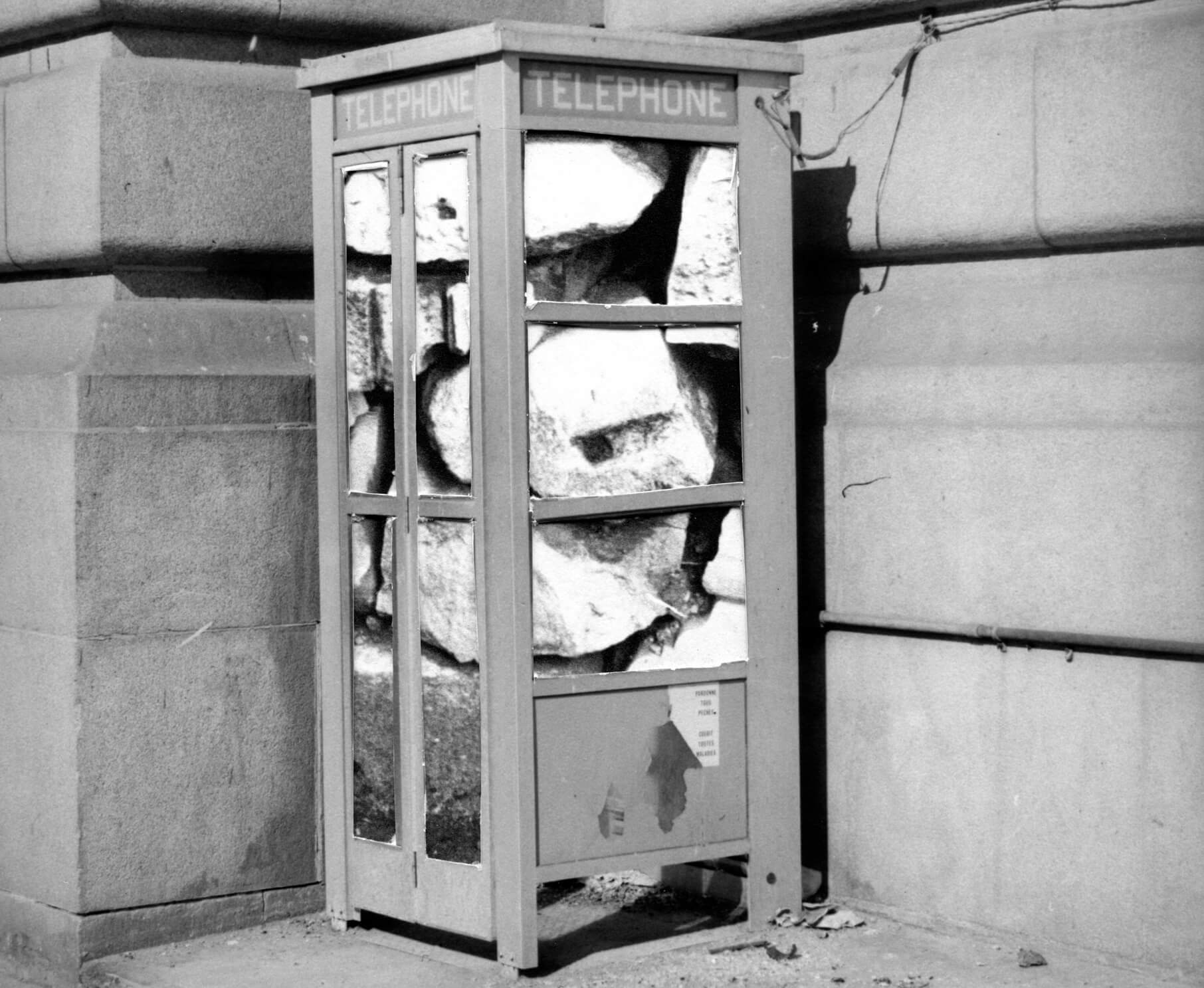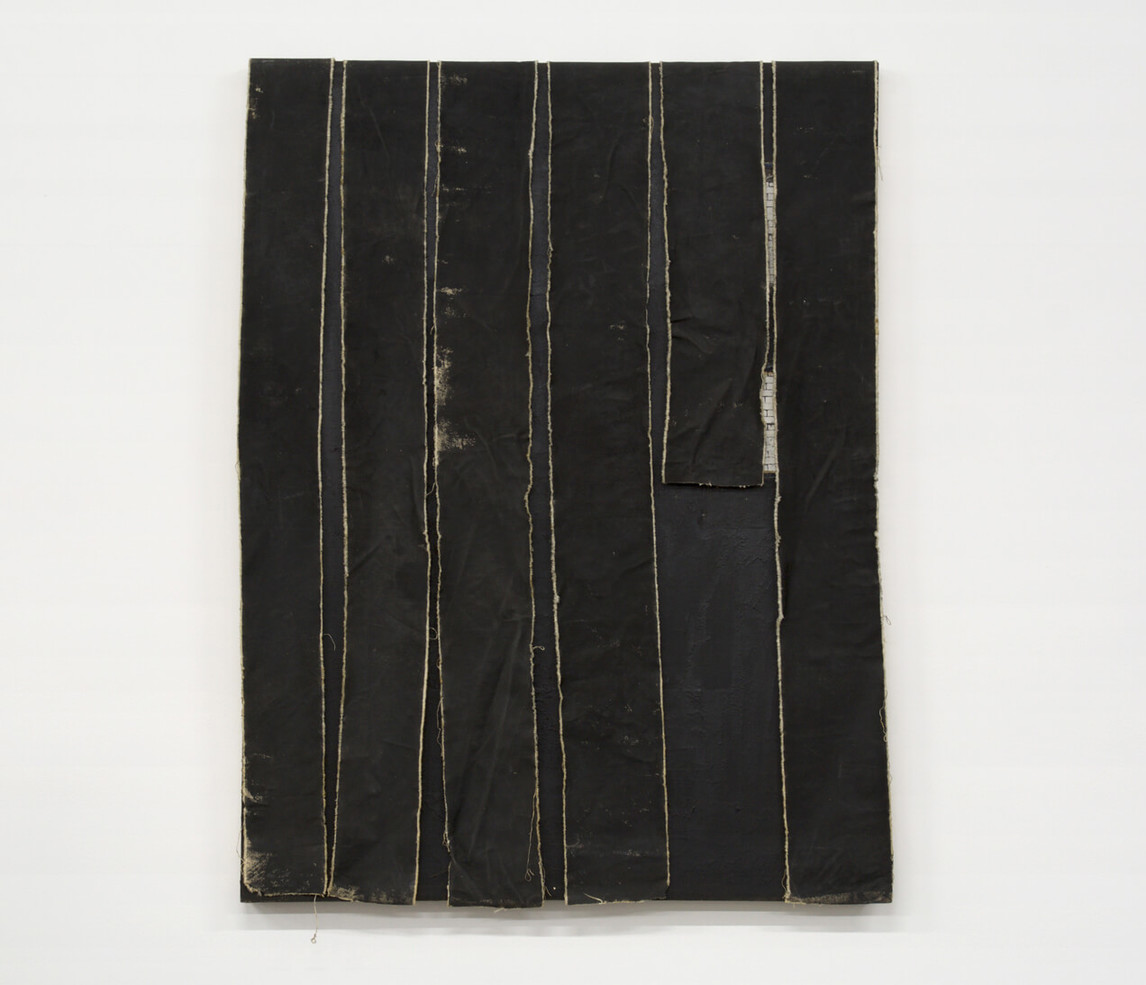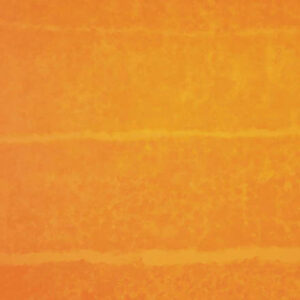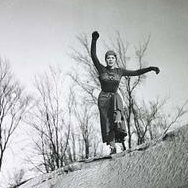Blocked Phone Booth 1978–79

Françoise Sullivan, Blocked Phone Booth (Cabine téléphonique bloquée), 1978–79
Black and white silver print and collage, 50.8 x 33 cm
Collection of the artist
In this black and white photomontage, a telephone booth, similar to those that punctuated North American cities in the 1970s, is crammed with large boulders. The inspiration for this work came to Sullivan in a dream, in 1973, which she jotted down in one of her notebooks. In the dream, a woman walked and ran around the outside of a house, attempting to get in. She reached for its windows but they were too high or blocked. She attempted to open its doors, but none of the keys she held fit the locks. She continued trying, on and on, because she knew the house was her home.


Sullivan worked through the idea of a blocked house repeatedly, with variations, in different media. From 1976 to 1979, she created a series of photomontages from pictures she took of houses and other structures. Blocked Phone Booth belongs to this series. The phone booth was chosen because its walls and door are made of glass and therefore clearly reveal the boulders that fill it, suggesting blocking communication.
In 1977 and 1978 Sullivan developed performative approaches to the same idea. She painstakingly filled the open doors and windows of abandoned houses she encountered during her European travels with rocks of various sizes until the apertures were completely blocked, and then she set out to unblock them. Her collaborator in these works was David Moore (b. 1943), who documented her repetitive labour on film and in photographs. Blocked and Unblocked Window (Fenêtre bloquée et débloquée), for example, was created in the Blasket Islands, Ireland, and in Santorini, Greece. The documentation shows the artist absorbed by her task. Together, the photographs, photomontages, and performances constitute an excellent example of how Sullivan’s conceptual art practice functioned through repetition, and how it allowed the artist to work through an idea and elaborate different visual solutions.

 About the Author
About the Author
 More Online Art Books
More Online Art Books
 Acknowledgements
Acknowledgements